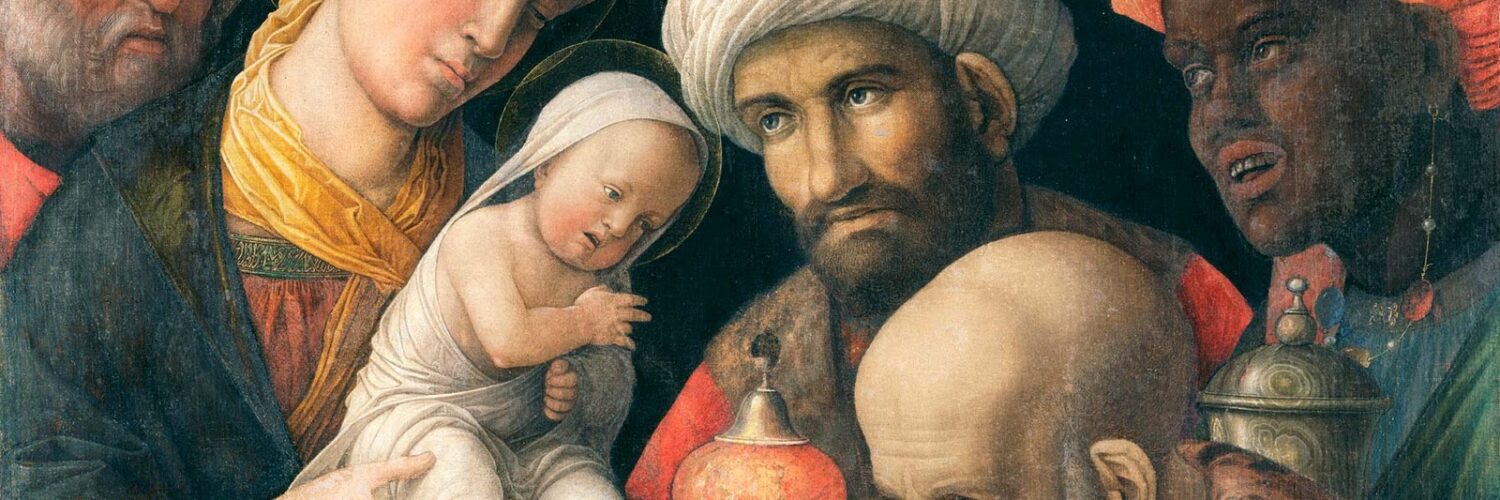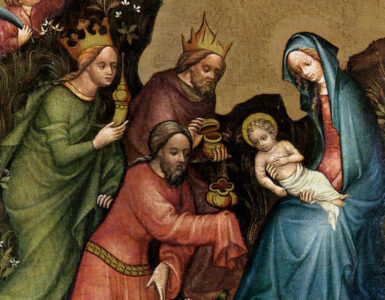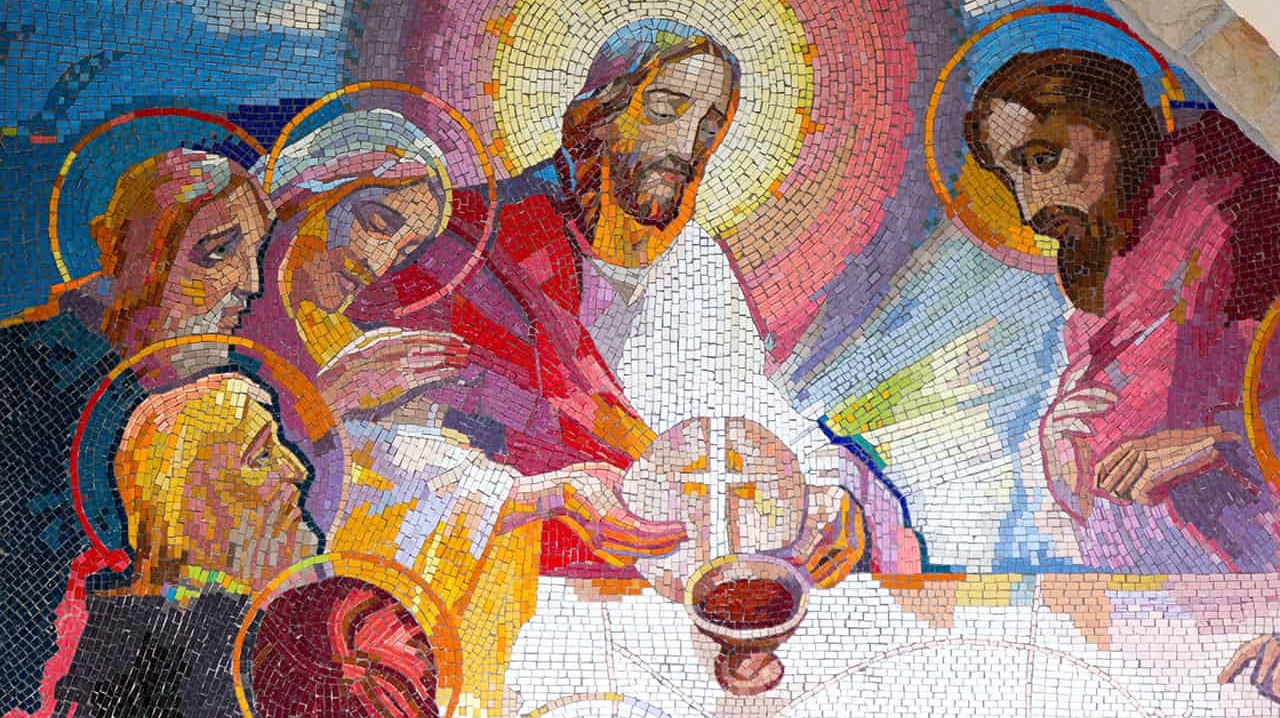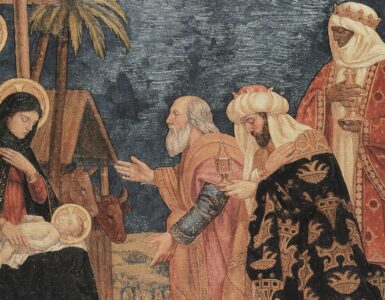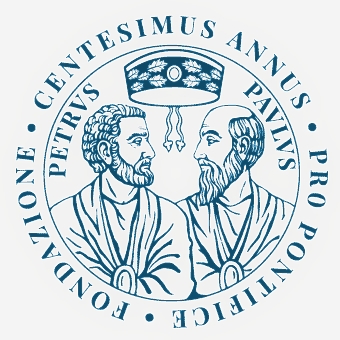It was not made known to people in other generations as it has now been revealed to his holy apostles and prophets by the Spirit.
Any Catholic priest, I included, can define his priestly mission in those terms, just as St. Paul did. There is continuity in the transmission of the deposit of faith from Jesus, to the Apostles, to their successors, the bishops and their helpers, the priests and deacons, down through the centuries.
But there is also continuity of the message: my task, my mission is to reveal, to explain and to live out with you God’s most grandiose plan of salvation. There are different images adopted through the Bible to illustrate this plan; they are all colorful. Arguably the best is the one of a banquet.
On this mountain the LORD of hosts will provide for all peoples a feast of rich food and choice wines, juicy, rich food and pure, choice wines. (Isaiah 25:6)
And people will come from the east and the west and from the north and the south and will recline at table in the kingdom of God. (Luke 13:29)
To help us understand God’s plan, every year, the Church offers the solemnity of the Epiphany to manifest it and to explain it. As a starting point in our attempt to grasp the significance of this solemnity, let us recall the last formal dinner that we organized ourselves.
The first element defining the nature of a banquet is the occasion: a wedding, a first Communion, a Baptism, an anniversary, a victory, a graduation, a promotion. The nature of the banquet determines who gets the invitation to share in the meal and in the festivities. Next, there is the amount of money that we can afford to spend; this obviously determines not only the size of the banquet but also the quality of the food served. Lastly, the third element determining the dinner is the number of guests invited.
My mission as a priest is to go around and tell you, my people, that, with our God, it is all so different: our God has planned this huge, royal banquet, to which ALL are invited. It is a continuation of the same mission given to St. Paul and mentioned by him in his Letter to the Ephesians (3:2-3, 5-6): that the Gentiles are coheirs, members of the same body, and copartners in the promise in Christ Jesus through the gospel.
All are invited because all are God’s adopted children in the Son, Jesus Christ. It is the royal wedding banquet of the Lamb mentioned in the Book of Revelation; it is the wedding feast of Jesus the Groom and His bride, the Church which includes all peoples, all nations, Gentiles and Jews alike. The image of a banquet with all of God’s children seated around the same Table is enlightening because it helps us connect our Eucharistic gatherings to that heavenly feast.
Those among us, whose days are more productive because they are enriched by intense longing for that heavenly family reunion, are blessed to see immediately this connection. This thought is so uplifting that, from the very beginning, the Church took to heart the order that Jesus gave us about the Eucharist: “do this in memory of me” that she made it an obligation for all Catholics to attend Mass on Sundays and on holy days of obligation.
The Eucharist is a foretaste and a pledge of that royal wedding banquet at which all of God’s children will be seated around the Father’s Table in the Heavenly Jerusalem.
Our first reading (Isaiah 60:1-6) and the Gospel (Mt 2:1-12), which are so familiar to us, remind us that each Eucharistic celebration here on earth and the royal wedding banquet have a definite familial overtone.
“Raise your eyes and look about; they all gather and come to you: your sons come from afar, and your daughters in the arms of their nurses. Then you shall be radiant at what you see, your heart shall throb and overflow, for the riches of the sea shall be emptied out before you, the wealth of nations shall be brought to you.”
The precious and symbolic gifts that the Magi brought to Jesus begin to fulfill that prophecy. We, sons and daughters of God, members of the Heavenly Jerusalem, do not participate at the Eucharistic celebration emptyhanded. We, the guests, share with each other generously for mutual uplifting and enjoyment. We pitch in of our time, talents and treasure to make the Holy Mass and the life of our parish communities better and more joyous, while we long for God’s family reunion.
Indeed, as far as the royal wedding banquet in the Heavenly Jerusalem is concerned, all of God’s children will get there with all the good, the caring, the self- giving with which the Holy Spirit inspired them to enrich God’s family.
“Write this: Blessed are the dead who die in the Lord from now on.” “Yes,” said the Spirit, “let them find rest from their labors, for their works accompany them.” (Revelation 14:13)
At least two considerations are in order at this point. Unlike our parties and dinners, in heaven, the number of guests is purposely unlimited: no one is excluded beforehand because our Father wills everyone to be saved and to come to knowledge of the truth. (1 Timothy 2:4)
And, in His boundless magnanimity, our Father has prepared such a scrumptious banquet that we cannot even imagine.
“What eye has not seen, and ear has not heard, and what has not entered the human heart, what God has prepared for those who love him.” (1 Corinthians 2:9)
And, in heaven, too, God’s grace will keep flowing freely like the cascade of champagne from the pyramid of glasses at fancy weddings.
This is a breathtaking vision indeed! It is up to us now, as we whet our heavenly appetite at this Eucharist, today, to pledge our contribution from the riches that we possess: our talents, our skills, our time, and the fruit of our labor. The more generous our sharing, the richer the life of the Church and more quickly time will pass before the wedding feast of the Lamb begins for all of us.


